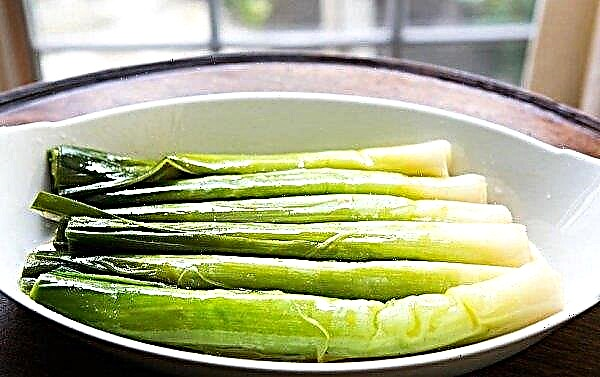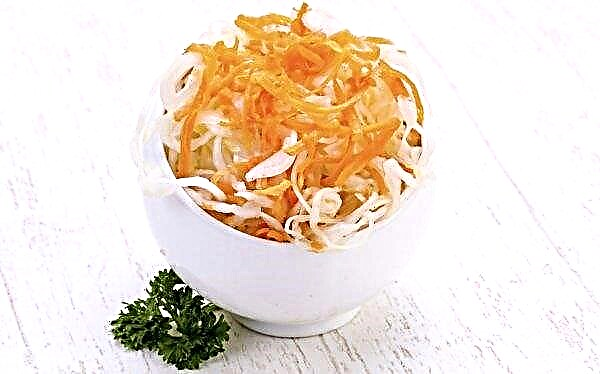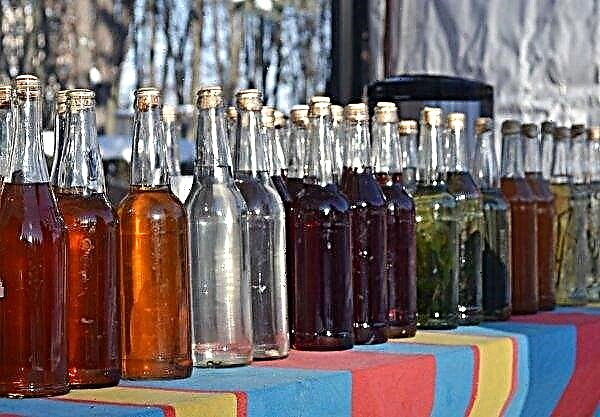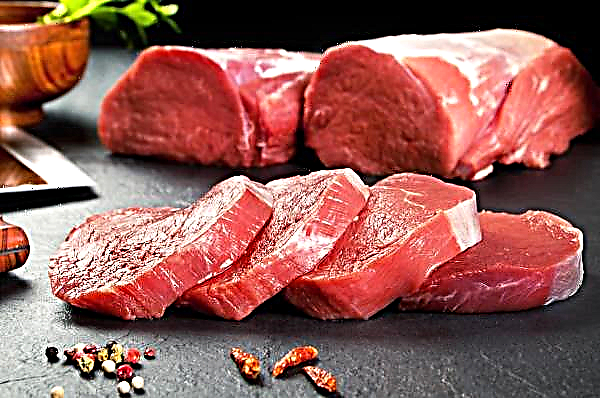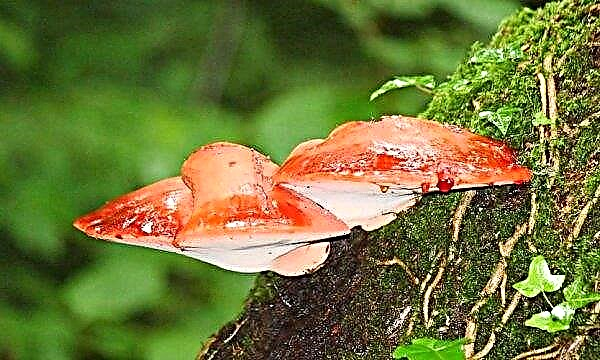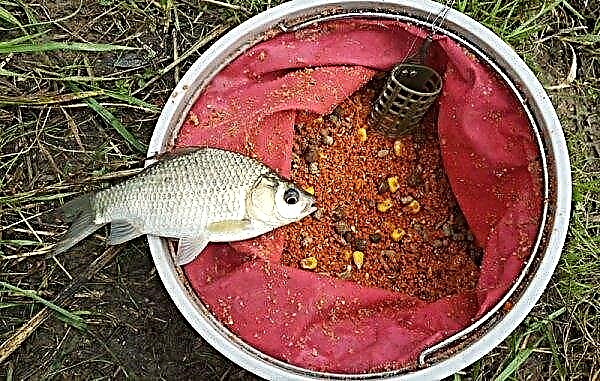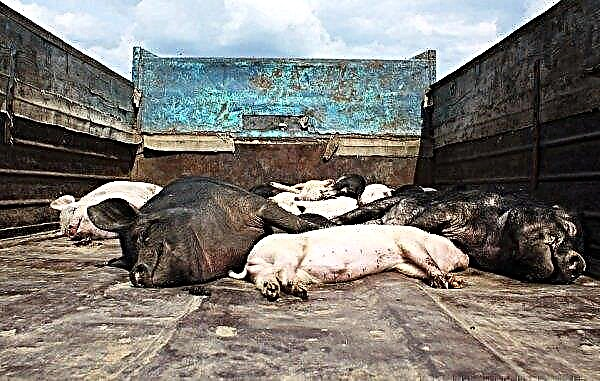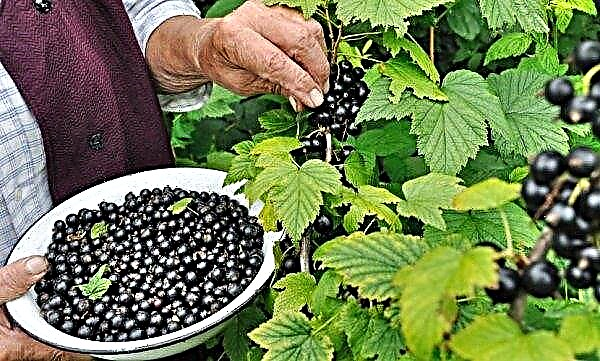A graceful evergreen composition is a universal option for almost any site. One of the most striking components of it can rightfully be called juniper, which can decorate the upper tier, as well as create the perfect background for ground cover and low-growing species. In the article, the Sentinel variety is considered in detail as one of the most popular, and all the subtleties of growing a plant are also indicated.
Botanical Description
Under ordinary juniper Sentinel (Juniperus communis Sentinel) it is customary to mean an evergreen coniferous tree. A distinctive feature of this variety is miniature, an adult tree 10–15 years old does not exceed a height of 150 cm, and the total diameter of the crown is about 30–35 cm. The maximum height of the plant reaches 5 m, while the width of the crown does not exceed 60 cm.
 Sentinel has a narrow-crowned crown with a characteristic sharpening in the upper part. It consists of straight, tightly pressed shoots.
Sentinel has a narrow-crowned crown with a characteristic sharpening in the upper part. It consists of straight, tightly pressed shoots.
Each branch is directed upwards, covered with a gray-brown smooth bark. The stem of the tree is straight, gray-brown. In young forms, the bark is smooth, but as the tree ages, it forms numerous cracks. The root system of the tree is not branched, located in the upper layers of the substrate.
Did you know? In ancient Russia, juniper was widely used for the preparation of pickles. All kinds of kitchen utensils were fumigated with its smoke to cleanse it of pathogenic bacteria and fungi.
The coniferous cover of this variety is a dense scaly formation of the leaf type. The needles are rather small, with a pointed end, and a distinct silver-green color is also characteristic of it. As the vegetation grows on the shoots, small rounded pineal-shaped fruits are formed.

At first, the bump has a saturated green hue, but as it ripens, its color changes to all kinds of blue-black shades with a characteristic whitish coating. Fruit ripening is observed for 2 years, up to 10 light brown seeds with the wrong wing are formed in each cone berry.
Characteristic
Juniper Sentinel is a typical representative of the genus of the same name (Juniperus), part of the Cypress family (Cupressaceae).
Moreover, the tree has its own distinctive features, which result in the following varietal characteristics:
- low growth rate (average annual growth of the plant is about 10 cm);
- increased resistance to drought and frost resistance;
- exactingness to lighting (well-lit, but slightly shaded areas);
- undemanding to the soil;
- excellent compatibility with both coniferous and deciduous species;
- ability to grow safely even in urban environments;
- The variety is intended for growing in turners, rockeries, rock gardens, rocky and heather gardens.

Landing
Proper planting is the main thing for the successful cultivation of any decorative look. Compliance with all the subtleties of agricultural technology of this procedure allows you to create the best conditions for growing plants for more than one year. At the same time, the decorativeness of the juniper will be maintained at the required level.
Site preparation
For planting planting material, Sentinel cultivars choose well-lit and open areas, but protected from direct sunlight (especially at noon). Wherein the place under the future flowerbed must be protected from flooding, sharp drafts and strong winds.
 The plant is not demanding on the substrate, but it is best to grow it in areas with well-fertilized loamy soil.
The plant is not demanding on the substrate, but it is best to grow it in areas with well-fertilized loamy soil.
The basic procedure for the preliminary preparation of the landing site includes the following steps:
- About 2 weeks before planting, the soil should be cleaned of all kinds of pollutants and weeds.
- After this, the soil needs to be fertilized, for this, about 5 kg of humus, rotted manure, compost or peat should be given per 1 m², and then the soil needs to be well plowed to a depth of 30 cm.
- The next day after fertilizing, you need to dig a 50 × 50 cm planting hole (diameter × depth), and then place a 10 cm thick drainage layer on the bottom (fine gravel, crushed stone, broken brick, etc.).
- The drainage well should be filled with a nutrient soil mixture, about 2/3, and then watered. Such a soil is prepared from peat, sand and turf land (2: 1: 1).
Seedling preparation
Preparing seedlings is quite simple. First you need to water the plant well. After the water is absorbed, it should be carefully removed from the flowerpot, while the remaining substrate should be slightly cut off.

Further, the aerial part and the root layer of the soil must be generously sprayed with any complex fungicide and wait until the plant dries slightly. After that, the juniper becomes completely suitable for planting.
Important! The seedling should be placed in the soil so that its root neck is located approximately at the same level with the soil. Otherwise, its growth rate can be greatly reduced.
Care Features
Juniper Sentinel requires a standard set of agrotechnical procedures to ensure optimal care and long-term growth. The first thing this plant requires is proper watering. Excessive moisture adversely affects the representatives of this variety, so watering is performed no more than 1-2 times per month.
However, young seedlings require a more generous irrigation during the first two years, so they perform the procedure about 1 time in 2 weeks. The water consumption in this case, depending on the age of the juniper, should be from 5 to 20 liters.
 About 1 time per week, weeding and loosening of the tree trunk circle to a depth of 10 cm should be carried out.
About 1 time per week, weeding and loosening of the tree trunk circle to a depth of 10 cm should be carried out.
To reduce the frequency of watering and loosening, it is recommended to mulch the territory of the flower bed. To do this, you should fill the soil with small sawdust, husk of seeds, peat, bark of pine plants, etc. Moreover, the mulch layer must be at least 10 cm thick. Update the mulch periodically, about 1 time per month.
With proper soil preparation, Sentinel needs fertilizing no earlier than 2-3 years after planting. Perform this procedure 1 time per season in the first half of April. For this, any complex mineral fertilizer for coniferous species should be introduced into the soil. Tree pruning is also carried out in early spring, all dried up, broken or ugly sticking branches are subject to removal.
Important! All sections on the surface of the branches must be treated with crushed charcoal or garden varnish in order to avoid infection of the tissues with parasitic fungi or bacteria.
Special attention should be paid to the preparation of juniper for wintering. After lowering the average daily temperature to + 5 ° С, the trunk circle should be mulched. At the same time, the thickness of the covered layer should be increased to at least 20 cm. In the first few years after planting, the branches of young seedlings should also be protected. To do this, they are covered with a dense burlap, spanbond or any other vapor-permeable material.

Pests and diseases
Often, the Sentinel variety has a fairly high immunity against all kinds of pests, as well as infectious lesions. However, if agricultural cultivation techniques are not followed, this problem becomes quite relevant. At the same time, an untimely response to it can lead not only to a decrease in the decorativeness of a tree, but also its death.
Did you know? Juniper is one of the main natural landmarks for geologists. All large overgrown thickets of this plant develop near rich coal seams, which is a characteristic feature of the species.
The most common diseases of juniper are considered alternariosis, biorell cancerall kinds of infectious necrosis, shute and fusarium. To combat them, any complex fungicide is used (“Khom”, 1% copper sulfate, etc.).

At the same time, it is recommended to cut and burn the affected branches in order to avoid the spread of the disease. To prevent the occurrence of infection, it is recommended to periodically spray the crown with the “Vectra”, “Bayleton”, “Tilt” or “Ridomil” preparation.
The most dangerous tree pests are:
Check out

- gall midges;
- spider mite;
- scale insects;
- sawfly;
- aphid.
The main prevention of tree damage by pests is strict adherence to all the subtleties of agricultural technology for growing crops.
To eliminate the larvae, as well as adults of the above insects, it is recommended to spray the tree crown twice with a gap of 2 weeks with any complex insecticide.
Juniper Sentinel is a universal coniferous species that can successfully fit both in the rock garden and in the deciduous flower bed. The tree can be an excellent basis for the garden, creating a contrasting gray-green background, and also turn into a central plant on the site. However, for this, the variety needs specific care, otherwise the decorativeness of the tree will be significantly reduced.

